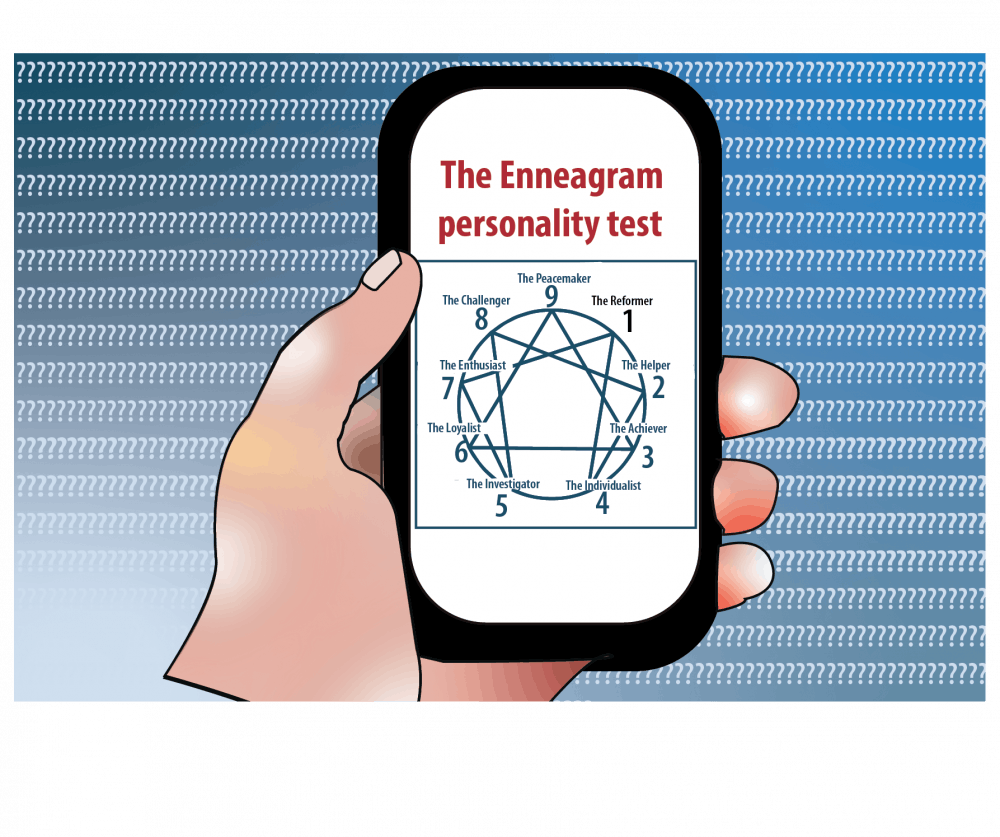Hobgood said another reason she thinks enneagram graphics are often posted on social media is because these graphics convey the positive and negative aspects of individual personalities. Hobgood said these graphics approach personality traits with grace, acknowledging flaws and weaknesses with gentleness.
“I think it lets people share maybe not all the picture-perfect things about themselves in a fun way,” Hobgood said.
UNC sophomore Abbie Trollinger, a type 2 wing 3, said she shares her enneagram type on social media because it allows her to connect with others and understand them better.
“It helps you put things that you’re feeling and experiencing into words and into a way that you can share with other people,” Trollinger said. “It helps me think through things that I’ve been dealing with and put some structure to those feelings and thoughts.”
Patrick Harrison, a UNC professor in the Department of Psychology and Neuroscience, said the way enneagram diagrams look make them popular to post on social media.
“The imagery actually makes it more attractive,” Harrison said. “You can see on that figure exactly where you fall and how it relates to the other personality types.”
Is it valid?
Harrison said personality tests such as the enneagram assume that people behave similarly across different situations. However, he said psychologists have questioned if behavior across situations is caused by the individual personality or more by each unique social situation.
“So something happens, and you react in one way. Is it because of you, deep down who you are, or is it because of factors in the situation or are there cues that tell you how you should behave? Which is more important?” Harrison said.
Harrison said the current consensus is that the situation determines a person's behavior more than their individual personality.
Harrison said one of the main flaws with the enneagram test is that the questions assume people are stable, or that their behaviors are consistent. When people answer these questions, they only remember situations when these traits were accurate.
“We tend to perceive that we are consistent,” Harrison said. “If I asked you, ‘How extroverted are you on a scale from one to seven,?’ you might say, ‘Oh I’m pretty extroverted.’ You would pay attention to situations where you were extroverted. You wouldn’t necessarily think about the times where you were really introverted.”
To get the day's news and headlines in your inbox each morning, sign up for our email newsletters.
Harrison said another flaw in the enneagram arises from social desirability bias. Social desirability bias is the idea that people answer questions based on how they think they will be perceived by others.
The enneagram asks about various traits that the test taker may consider socially desirable or attractive. The test taker will then answer according to what they think will yield a “good,” or socially favorable, result. The test then gives a type that affirms this desirable trait, assigning the test taker a type they wished they had, rather than a type that accurately defines them.
“People read this and say, ‘If I answer this question in this way, I’m going to get labeled as this,’” Harrison said. “'So I’m going to respond to this question in a way that I think makes me look good.' That is one of the biggest motivations we have.”
Harrison said the Big Five personality test is considered more reliable and valid overall. The Big Five measures the extent to which an individual demonstrates five major traits — extraversion, neuroticism, agreeableness, conscientiousness and openness to experience.
Harrison said this test has demonstrated a correlation between personality traits and actual life outcomes. For example, according to correlational research, people who measure higher in conscientiousness tend to have higher GPAs.
Harrison said type-based tests such as the enneagram are generally more popular than more accurate assessments because the enneagram mainly highlights the more positive aspects of personality.
“At the end of the day, we like a little bit of an ego boost,” Harrison said.
Harrison also said the enneagram is gaining popularity on more than just social media. Companies are now administering the enneagram test during the hiring process to assess applicants for desired traits.
Because of the enneagram’s flaws, Harrison said he encourages students to understand the limitations of the enneagram to be prepared while looking for jobs.
“Some companies put a lot of stock into personality tests,” Harrison said. “It’s beneficial for us as applicants, as we’re going out there, to be critical consumers of the test.”
Don’t put me in a box
With personality tests such as the enneagram, students are not only attaching themselves to the test's labels, but they are actively sharing the categories they group themselves with others.
Harrison said we have a fundamental desire to learn more about ourselves. To make judgements, we need points of comparison. People are happier when they can eliminate doubt and ambiguity, especially regarding themselves.
“As much as we like to think in gray areas, there is something appealing and safe with black and white answers,” Harrison said.
Trollinger said she believes students shouldn’t view the enneagram test as a defining label, but rather as a form of connection based on shared traits. She said because of the freedom within this test, two personalities can find common ground and forge a meaningful interpersonal connection.
“I always think about a metaphor, like a color. We could both be blue, but you could be teal and I could be Carolina Blue,” Trollinger said. “There’s so much freedom within that category to be unique and to be special while still being labeled as blue.”
@madelinellis
arts@dailytarheel.com



